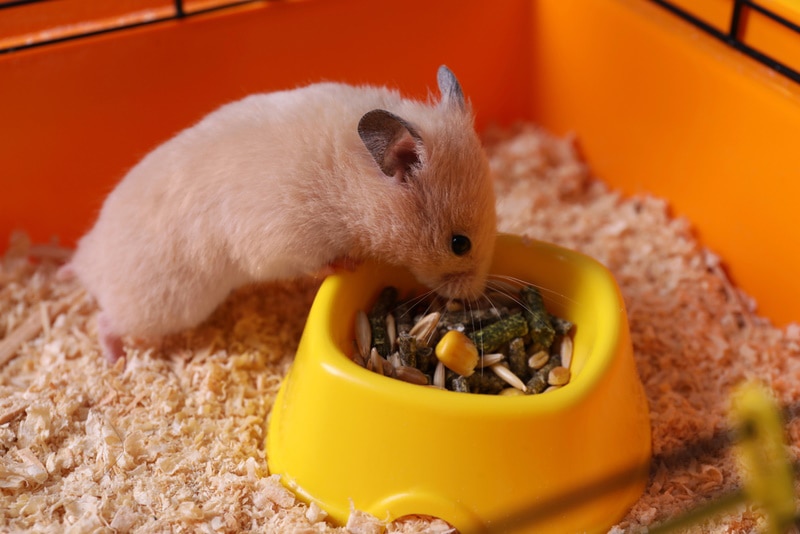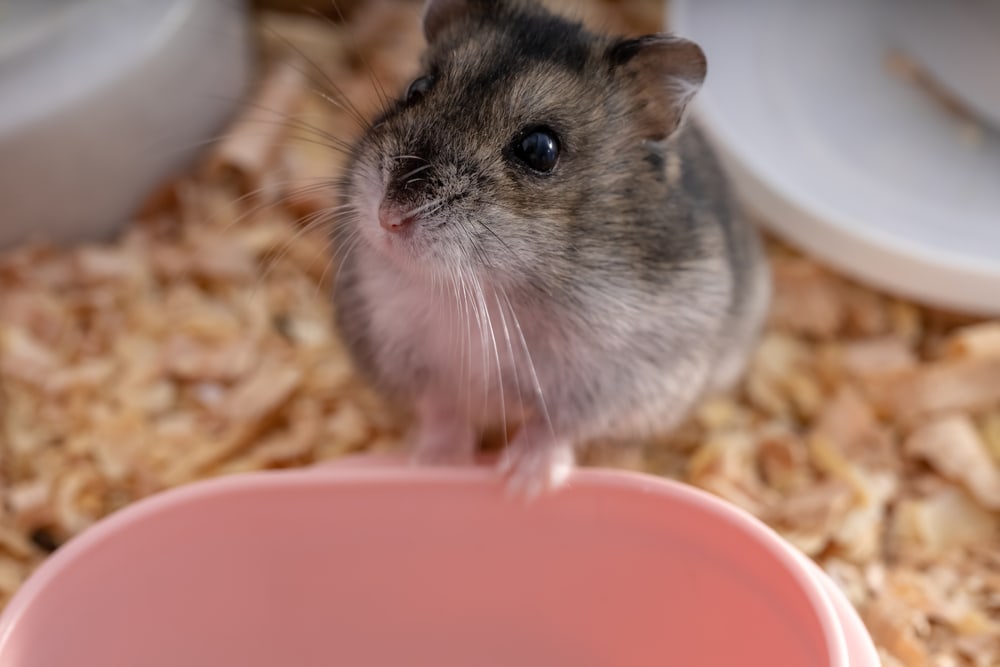Can Hamsters Throw Up? Vet Approved Facts & FAQ
By Brooke Bundy
Updated on

When you adopt a dog or cat, you’re accepting the fact that you’ll eventually have to deal with the messy business of cleaning up vomit. Since puppies often eat things they shouldn’t, it usually doesn’t take very long before you have to fulfill this obligation. However, you may be surprised to learn that hamsters, like other rodents, can’t throw up. Unfortunately, though, that doesn’t mean they don’t get sick. Hamsters are small, fragile creatures that are susceptible to a host of illnesses. You should always call your vet if they display other signs of sickness, such as diarrhea or lethargy. Since they can’t vomit, their condition can quickly turn critical if they absorb too many toxins.
Why Can’t Hamsters Throw Up?
Hamsters don’t have the digestive anatomy or possibly even the wiring in their brain that’s required to be able to vomit. The act of vomiting requires a strong diaphragm, which is the muscle under the lungs, and a stomach opening that allows for food to move back up through the esophagus. It also requires a connection in the brain that triggers that feeling of nausea that usually makes the stomach respond by vomiting its contents. Rodents, including hamsters, have a weak diaphragm and stomach anatomy that doesn’t allow contents to move back up. On top of that, in one study, researchers gave rodents a vomit-inducing drug made for animals. It had almost no effect on the rodent’s brain stems, which suggests that they may not even have the neurological capacity to upchuck.
Why is Food Coming Out of My Hamster’s Mouth?
One thing that hamsters can do that looks similar to vomiting is emptying their cheek pouches. A hamster’s cheek pouches serve as a vehicle to move food from one place to another. When they reach their destination, they will move the food from their cheek pouches to their mouth and then from their mouth to where they are planning to store it. The difference between this and what vomiting looks like in other animals is that there is no abdominal force needed to expel the food from their cheek pouches. So, even though it may look like vomiting, removing food from a hamster’s cheek pouches is a completely normal behavior, and one that shouldn’t be seen as a sign of illness.
Do Hamsters Get Digestive Disorders?
Despite their inability to puke, hamsters are frequently plagued by digestive disorders and bacterial infections. Proliferative ileitis, also known as “wet tail,” occurs when hamsters are infected with Lawsonia intracellularis bacteria. Overcrowded or unsanitary conditions put hamsters most at risk for developing this infection, which is characterized by diarrhea. Tyzzer disease is another common bacterial infection caused by the bacteria species Clostridium piliforme. Besides bacteria, protozoa, parasites, and even antibiotics can cause life-threatening digestive upset in hamsters.

How to Tell If Your Hamster Is Sick
Hamsters are small creatures that typically don’t weigh more than a couple ounces. It doesn’t take very many diarrhea episodes to lead to dehydration, so you should take your hamster to the vet as soon as you notice upset stool in their cage or notice “wet tail” on their bottoms.
- Loss of appetite
- Lethargy
- Swollen abdomen
- Difficulty breathing
On the other side of the spectrum, a constipated hamster also needs immediate medical care to prevent life-threatening blockages and the accumulation of toxins. A hamster may become constipated if they’ve ingested something they can’t expel, or if they’re infected with a parasite such as tapeworms.
How to Keep Your Hamster from Getting Sick
Stressed hamsters are the most susceptible to illness. This is why some hamsters become sick soon after leaving the pet store. As sensitive creatures, they often feel stressed about moving homes and learning new environments. Their anxiety may overwhelm their immune system, especially in weaker hamsters, leading to diarrhea and other signs of illness.
Hamsters can also become ill in an unclean environment. Cleaning their bedding at least once a week or as needed can help prevent your hamster from getting sick. If your hamster shares a habitat with another rodent, make sure the enclosure is big enough to safely accommodate them both without crowding, and always quarantine sick pets as diseases can be easily transmitted between hamsters housed in the same enclosure.
You should also make sure your hamster is eating a well-balanced commercial pellet diet, Timothy hay, and supplemented with spare amounts of fruits and vegetables, to ensure they receive the nutrition they need to stay healthy.
Conclusion
A hamster’s neurological system and weak muscles prevent them from vomiting. Unfortunately, their inability to vomit can make it more difficult to notice when your hamster isn’t feeling well. Due to their small size, they can quickly reach critical conditions if they become infected with a bacteria or parasite. Always take your hamster to the vet if you notice signs of illness such as diarrhea, lethargy, or difficulty breathing.
Featured Photo Credit: justus_joseph, Pixabay











